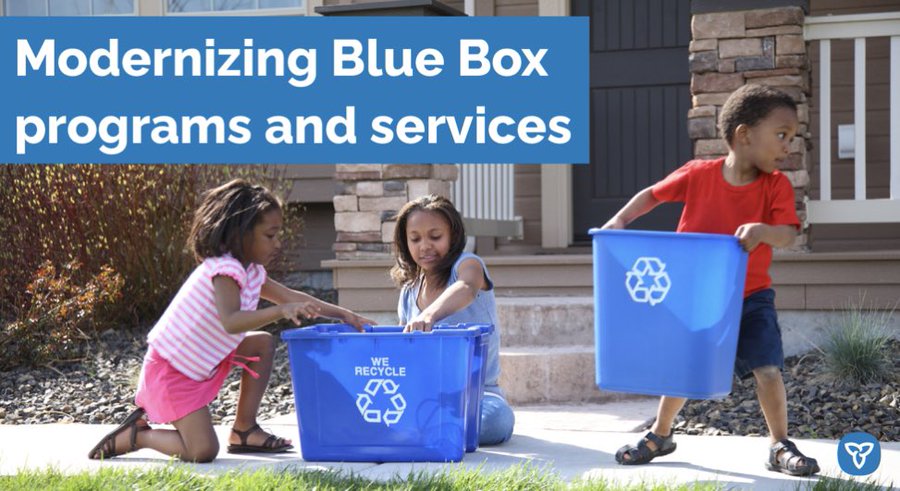Following extensive consultations, the Ontario government is improving blue box recycling by expanding service to more communities, standardizing the list of materials that can be recycled across the province and saving municipalities money by making producers of products and packaging fully responsible for the cost and operation of the program.
“Producers and municipalities have been advocating for an enhanced, producer-led Blue Box program for over a decade and I’m proud that our government has finalized these improvements,” said Jeff Yurek, Minister of the Environment, Conservation and Parks. “Our goal is to ensure our program remains convenient, affordable and right for communities. That’s why we are creating a stronger and more effective blue box service that will have some of the highest waste diversion targets in North America to promote greater innovations in recycling technologies and increased use of recycled materials.”
The enhanced Blue Box program will make recycling easier for Ontarians by:
- Expanding collection to all communities outside the Far North by 2026;
- Standardizing what can be recycled across Ontario;
- Accepting common single-use and packaging-like products such as paper and plastic cups, foils, trays, bags and boxes sold for home use;
- Collecting single-use items that are distributed or sold to consume food and beverage products, like stir sticks, straws, cutlery and plates;
- Expanding services to more facilities such as apartment buildings, municipally run or non-profit long-term care homes and retirement homes, and schools.
The province is also expanding collection to more parks, playgrounds, and transit stations, more than tripling the number of public space recycling bins funded under the current program so there are more opportunities to recycle at home and on the go.
The changes to the program will also transition the costs of the Blue Box program away from municipal taxpayers by making the producers of products and packaging fully responsible for managing the life-cycle of their products, resulting in an estimated savings of $156 million annually for municipalities.
“Our government is supporting the people of Ontario by moving accountability for recycling costs away from the taxpayer,” said Steve Clark, Minister of Municipal Affairs and Housing. “We are proud to support these changes that will help divert waste and protect our environment while putting money back in the pockets of people who live and work in this province.”
Combining 253 local programs into a single provincial collection system managed by producers will improve recycling operations across the province, encouraging producers to find efficiencies that will make recycling simpler and easier for residents, while also driving innovation in recycling practices and technologies by rewarding producers who make their products easier to recycle and can derive more value from waste – fueling job creation and attracting investment right here in Ontario.
The transition to the enhanced Blue Box program will be staggered from 2023 to 2025 to ensure a smooth transition for municipalities and producers, so there is no interruption to service for residents. Some of the first municipalities scheduled to adopt the new producer model include Kenora, London, Toronto and the Town of Hawkesbury.
Reducing plastic waste and litter and making producers responsible for managing waste from packaging or their products is a key part of the Made-in-Ontario Environment Plan. Ontario remains committed to balancing a healthy economy with a healthy environment and keeping Ontario clean and beautiful.
